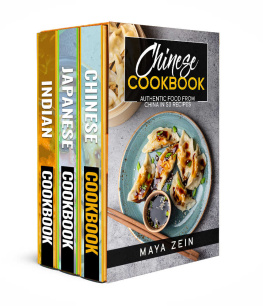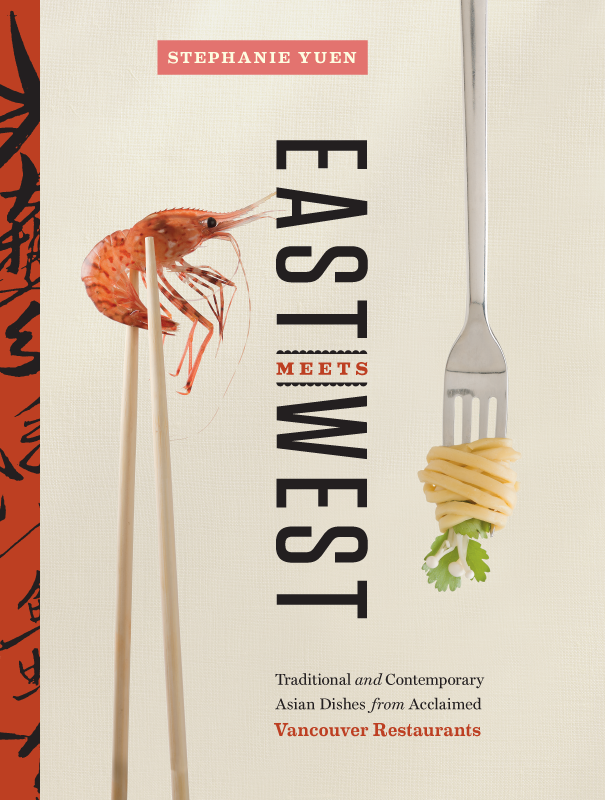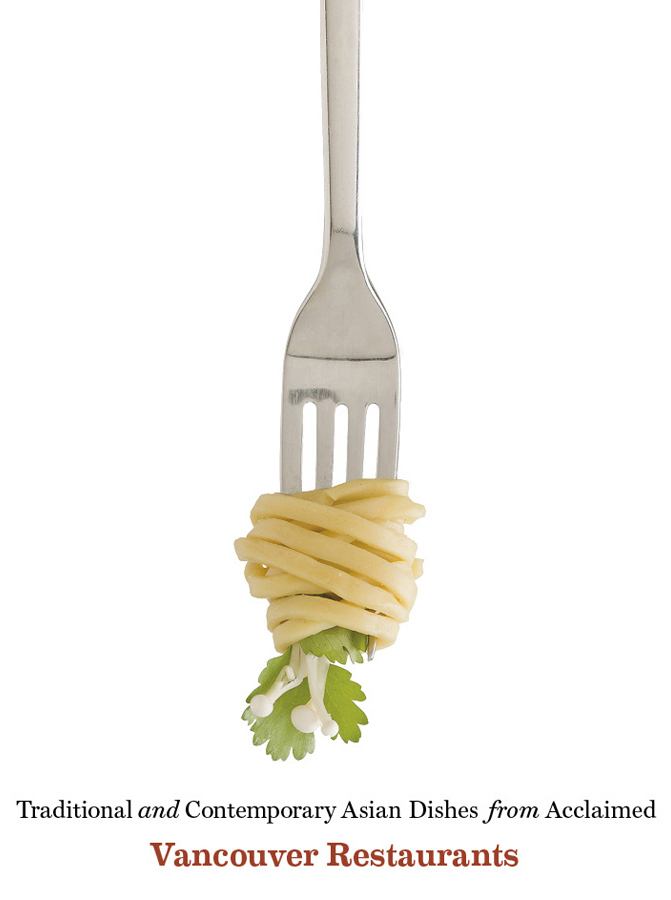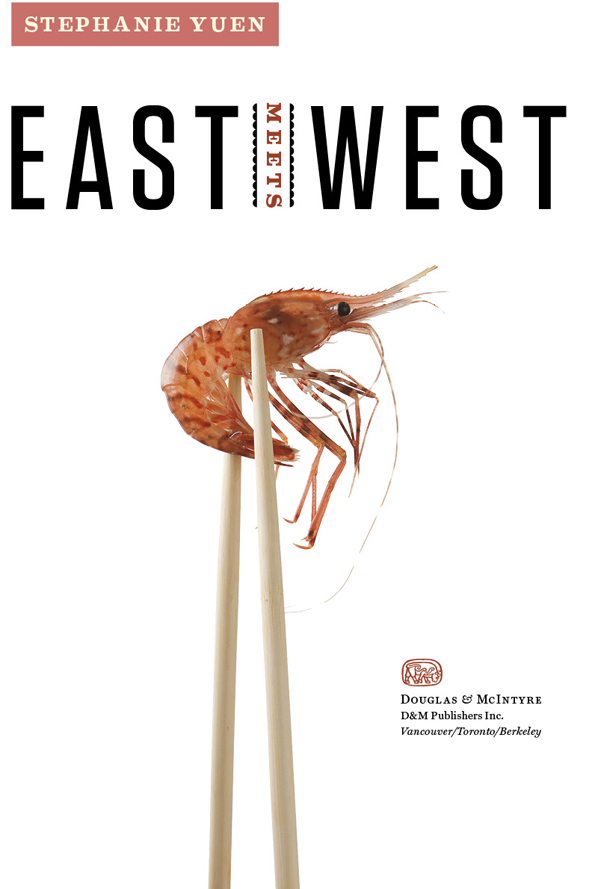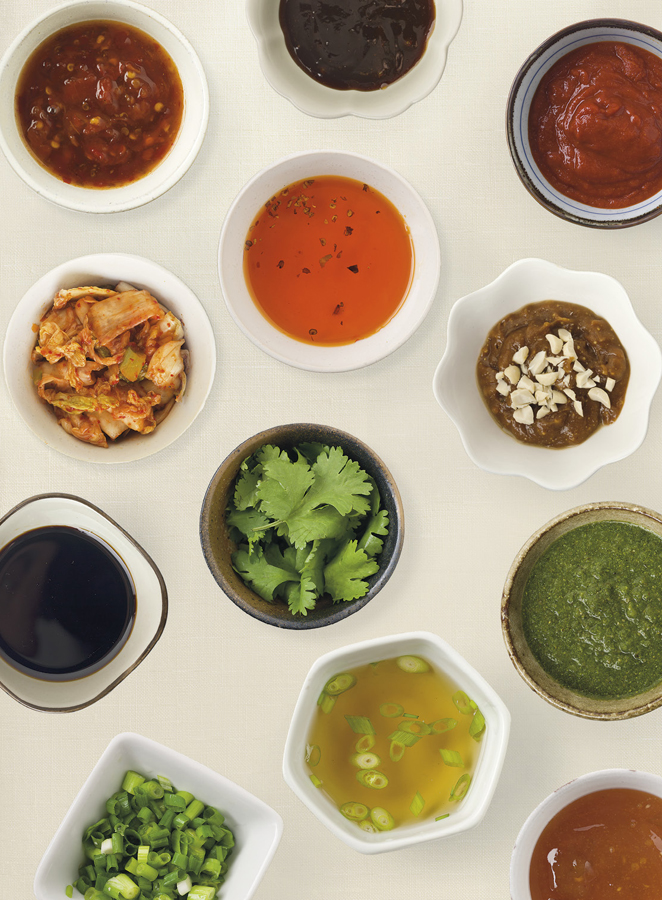Introduction
I DEVELOPED AN interest in food at a very young age, and like many food lovers, I started learning about cooking by watching my mom. I remember as a seven-year-old standing on a stool in the tiny kitchen of our 400-square-foot apartment in Kowloon, Hong Kong, fiddling with ladles and turners as she showed me the fun and the magic of authentic Hakka home cooking. Bubbling away on one of our two stove elements would be a pot of trotters, while on the other shed be wok-frying sliced beef while chopping up a perfectly cooked soy chicken that Id helped her slaughter and pluck. Minutes later, she would turn out a large platter of stir-fried choy sum and mushrooms shed bought fresh that morning at the market.
By the time I first set foot in British Columbia in the spring of 1975, I had eaten my fair share of Asian food in Hong Kong, and I was impressed by how fresh and tasty the food was in Vancouvers Chinatown. Buyers bustled among the fishmongers selling live seafood, and I readily inhaled the oven-fresh scent wafting down the street from the bakery cafs and the mouthwatering smell of grilled meat escaping from the meat shops. It didnt take me long to fall in love with Dollar Meats barbecued ducks, Sunrise Soya Foods tofu and Hons hor fan rice noodles. The lineups at restaurants were constant, and I was happy to join them.
My eldest brother, Tony, was the manager of Kingsland Chinese Restaurant on Granville Street at the time, and he took me inside the eaterys huge kitchen. There I vividly remember the owner and chef, Raymond Leung, standing in front of a humongous wok, his quick hands turning raw sticky rice, as he cooked it with diced lap chong (sausages), dried shrimp and mushrooms, and his forehead dripping with sweat. In another section of the kitchen, cooks stacked bamboo baskets filled with hand-crafted dumplings, stuffed buns, seasoned spare-ribs, chicken feet and tofu rolls, ready to be steamed as the dim sum orders came in. By the deep fryer, other staff dipped spring rolls and salt-and-pepper squid into the sea of hot oil until the outer layers turned crispy and golden. It was my first time in such a large, busy kitchen, and I was dazzled by the intensity of the tastes and sights and smells. I immediately wanted to learn more about the many aspects of Chinese food and cooking.
It was another few years before I was granted landed-immigrant status and had the chance to return to Vancouver to eat in the citys restaurants and observe how its multicultural culinary scene had metamorphosed. Although Asian immigration to Canada dates back nearly two centuries to the 1870s and 80s, when the Chinese (mostly Taishanese-speaking people from Guangdong Province) were imported as labourers for the railroads and the Japanese came to fish the Pacific waters and log the coastal forests, there were few restaurants back then. The earliest ones were Chinese smorgasbords started by the Cantonese cooks who fed the millworkers around what is now Gastown in the 1870s, but most Vancouverites were eating only what they prepared at home.
By the late 1950s and early 60s, a few restaurants throughout Vancouver had been serving Chinese and Western Food. Several Chinese eateries such as Dragon Inn, The Rickshaw, Mandarin Gardens, Asian Garden, Mings, HoHo and Marco Polo Supper Club had opened around Main, Pender and Columbia, and, driven by an influx of immigrants from Hong Kong beginning in the late 1960s, Chinatown was officially declared a historic site in 1970. These newcomers injected vital energy into Chinatown, and, by opening a number of retail shops, grocery stores and restaurants, successfully made it a destination for all things Asian.
The first wholly Chinese eatery to expand beyond Chinatown was Flamingo Chinese Restaurant, which opened in a residential area at Cambie and West 59th in 1973. Today, the restaurant continues to provide both traditional and modern Chinese cuisine in a cozy dining room at the very same location. The following year the grand seven-hundred-seat Kingsland Chinese Restaurant was opened downtown. A team of four chefs came from Hong Kong to showcase their culinary talents and enchant Vancouver diners with trendy Hong Kongstyle dishes served in a lavishly decorated room. Today, three of these four chefs are still cooking in Vancouver.
Next door to Chinatown, in the area around Powell Street and Gore, Japantown started to flourish. Professional chefs were hired from Japan, and among the first authentic restaurants to open its doors was Aki Japanese Restaurant, whose simple English menu offered sushi, sashimi, noodles and teriyaki. A nostalgic Japanese menu was posted on the walls. The first Fujiya Japanese food store followed in 1977. It wasnt long before other Asian stores and restaurants popped up: the first Korean restaurant, the Korean Barbeque Restaurant, was established on East Hastings Street, and Indian eateries appeared on Main, Fraser and Kingsway.
The major turning point for Vancouvers Asian communities, though, was Expo 86. Waves of Vietnamese refugees and immigrants from Hong Kong flowed into Metro Vancouver, followed by Taiwanese and Korean migrs. Beginning in 1990, Canada significantly increased its immigration levels, which attracted Malaysians, Singaporeans, Nepalese, Filipinos, Thais, Cambodians and Laotians, who have made the West Coast their new home.
Overnight, neighbourhoods changed, and restaurants popped up in previously unexpected locations. The original Japantown succumbed to rapid social changes, but Japanese restaurants blossomed along Robson, Burrard and Alberni Streets and other parts of town. Vietnamese noodle houses appeared along Hastings and Kingsway in East Vancouver, while Thai restaurants cropped up downtown and in Richmond. Taiwanese bubble tea cafs, many of them open late, became popular hangouts in Burnaby and Richmond.
The opening of the mighty Dynasty Chinese Restaurant in the Meridian Hotel on Hastings Street in 1988 signalled a new era of Asian cooking in the city. A team of five top-notch chefs from Hong Kong was brought to Vancouver to give locals and visitors the crme de la crme of luxurious Chinese dining experiences in a room that was elegantly designed, offered an enchanting ambiance and impeccable service and served exquisite cuisine. Unfortunately, the Meridian Hotel was relocated a few years later, and the extravagant Dynasty Chinese Restaurant was closed. Four of the five chefs, however, chose to stay in Vancouver, including Master Hung, the maestro of traditional Chinese barbecue, who now runs his own family-style barbecue restaurant in Richmond.
Along with the expanding Asian population and the profusion of restaurants came more and more Asian grocery stores and markets in different parts of the city. T&T, the first Asian supermarket to open in Canada, planted its store at the corner of Cambie and No. 3 Road in Richmond, which by 1993 was already the nucleus of Asian shopping centres and strip malls. Within a few years, Richmond became known as the New Chinatown, Little Asia or Little Hong Kong and still attracts a steady flow of immigrants from Taiwan and Mainland China who have continued to arrive since 2000.
Today, despite the fact that Toronto has a larger Asian population than Vancouver, this city is home to Canadas most vibrant Asian culinary community. Gone is the era of Chinese smorgasbord and Chinese-Canadian restaurants, when chop suey, deep-fried prawns, egg foo yung and sweet-and-sour pork ruled the menus. Instead, as diners travel widely and become more educated, they demand more authentic dishes, and restaurants are turning out food similar to whats being served back home. Woks, bamboo steamers and rice cookers are now widely stocked and found even in non-Asian kitchens, and a range of previously unavailable seasonings and herbs and sauces is easier and easier to find. Judging by the proficiency of non-Asians handling chopsticks, ordering confidently in Asian restaurants and distinguishing second-rate fare from fresh, well-prepared dishes, Vancouverites are committed to Asian cuisine! Further proof lies in the hundreds of sushi and sashimi bars, izakayas and noodle houses (pho restaurants now existing in greater numbers than any other kind of eatery in Vancouver), tandoori kitchens and dim sum restaurants, as well as the citys first artisan sake maker.



